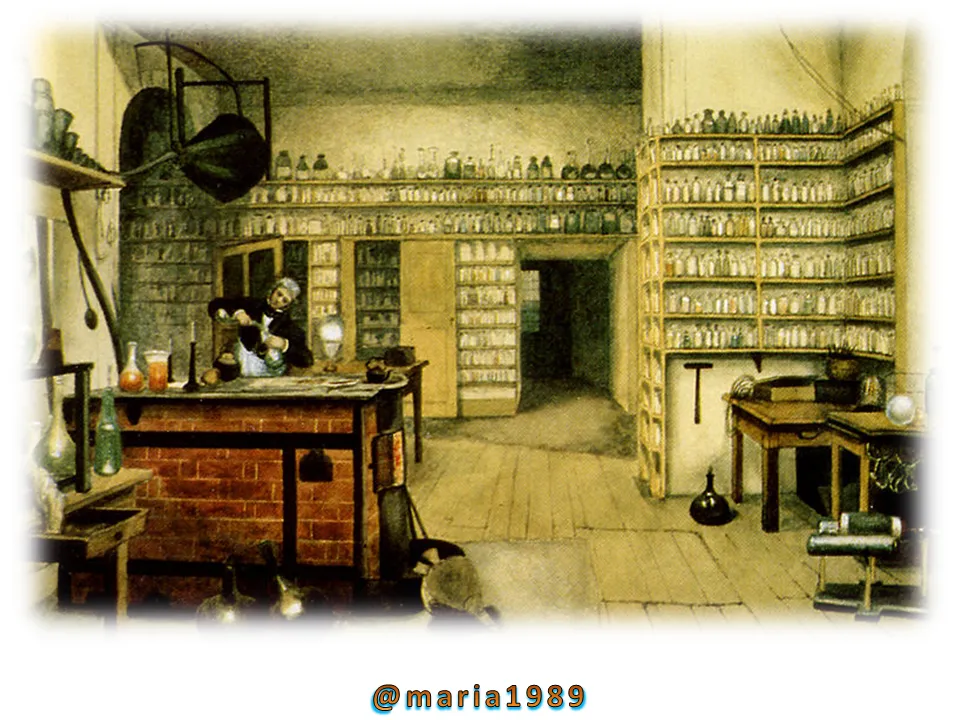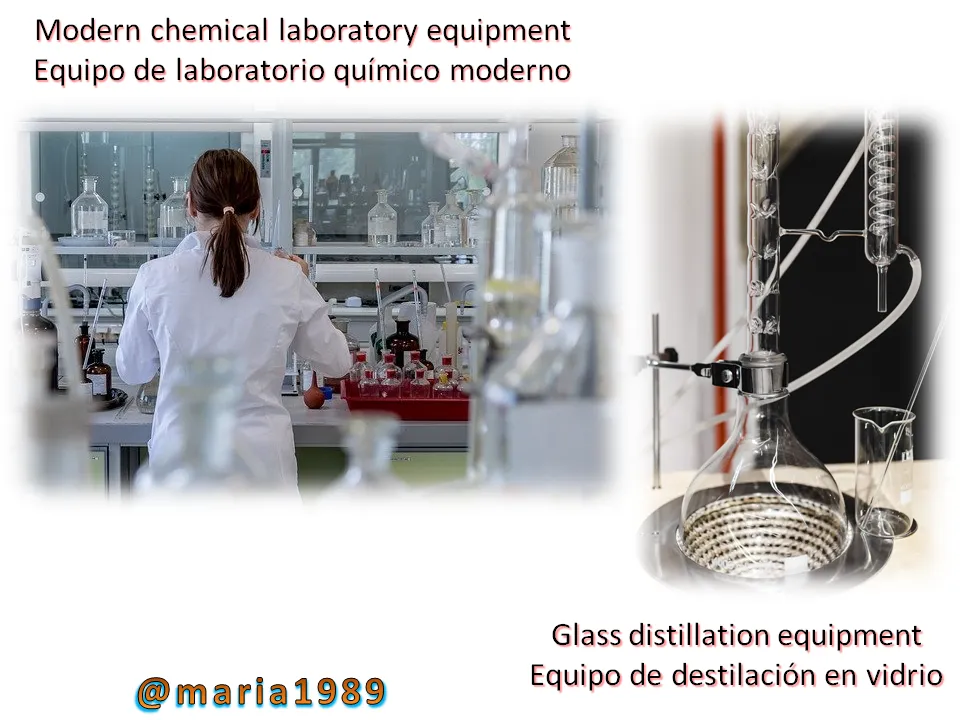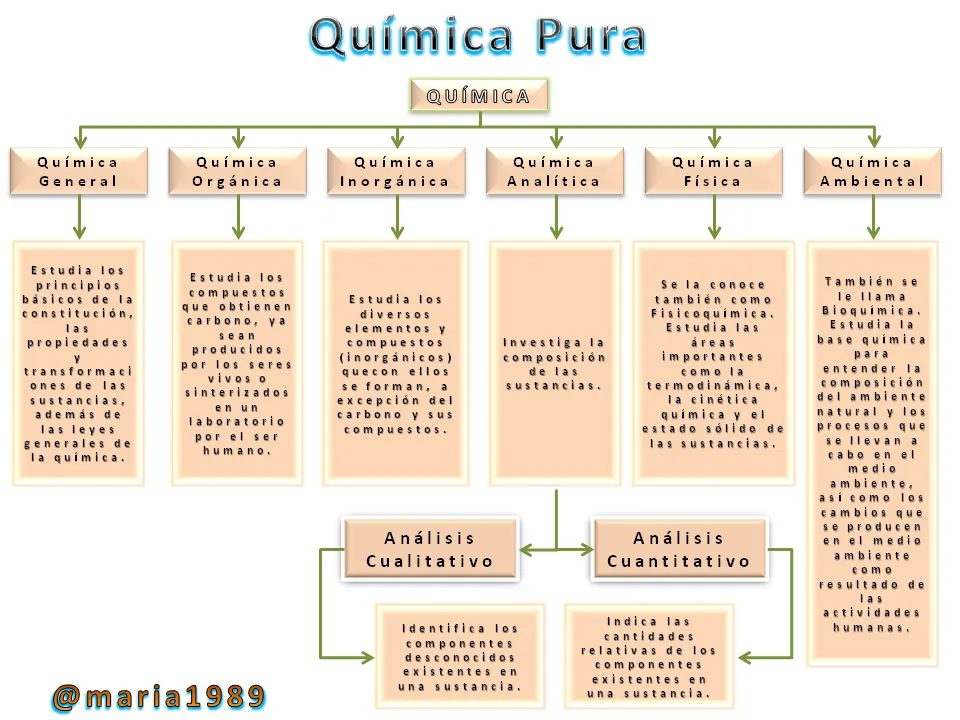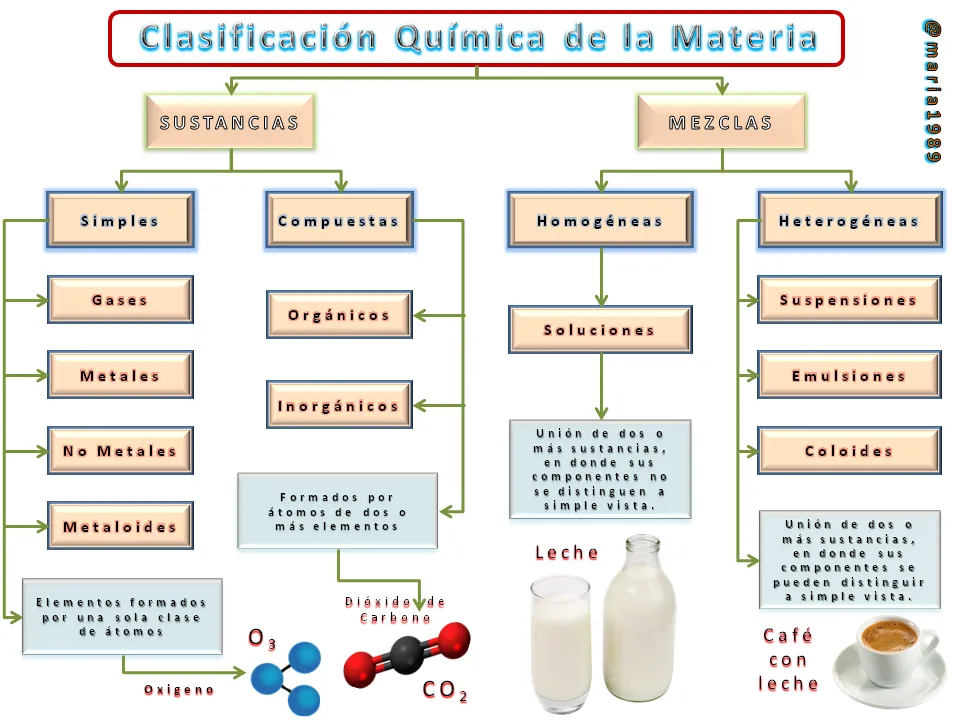
What is Chemistry?
Within modern research, every day, it becomes complicated to find the exact origin of the word “chemistry”, because there are several currents or theories that are shown according to the region or the scientific environment exposed. In ancient times, chemistry was associated with religion and philosophy, in many cases, it was presented as an esoteric myth full of mystery and even supernatural. Therefore, most researchers take for granted that it is a variation of the word "Alchemy", which encloses a set of elements, ancient processes and proto-scientific practices, from which it has obtained some knowledge that has certainly contributed to the development and improvement of the current discipline. It was widely used during the Middle Ages; which, in addition to studying the composition of water, its flow and course, also studied organic matter (its formation and decomposition), investigated the origin of movement and growth. But it was also eagerly searching for a formula to manufacture precious metals such as gold and silver for their economic value.
¿Qué es la Química?
Dentro de las investigaciones modernas, cada día, se hace complicado encontrar el origen exacto de la palabra “química, debido a que existen diversas corrientes o teorías que se muestran según la región o el medio científico expuesto. En la antigüedad, la química era asociada con la religión y la filosofía, en muchos de los casos, se presentaba como un mito esotérico lleno de misterio y hasta sobrenatural. Por tanto, la mayoría de los investigadores dan por hecho que es una variación del vocablo “Alquimia”, la cual encierra un conjunto de elementos, antiguos procesos y prácticas protocientíficas, de donde ha obtenido algunos conocimientos que han contribuido, ciertamente, en el desarrollo y mejoramiento de la actual disciplina. Se utilizó mucho durante la Edad Media; la cual, además de estudiar la composición del agua, su flujo y recorrido, también estudiaba la materia orgánica (su formación y descomposición), investigaba el origen del movimiento y del crecimiento. Pero afanosamente, buscaba una fórmula para fabricar metales preciosos como el oro y la plata por su valor económico.
In other regions of the world, it is suggested that the word comes from the Arabic word "al-kimia". Also, according to theories, it may be of Egyptian origin as it is taken as an example to chemi or kham, which means the name of ancient Egypt that translates as "Egyptian art". On the other hand, there is the theory of Greek origin, according to the words "khemia" which means: "to merge" and another Greek word, "khemeia".
En otras regiones del mundo, se plantea que la palabra proviene del vocablo árabe ”al-kimia”. También, según las teorías, puede ser de origen egipcio ya que se toma como ejemplo a chemi o kham, que significa el nombre del antiguo Egipto que se traduce como “el arte egipcio”. Por otro lado, está la teoría de origen griego, según las palabras “khemia” que significa: “fusionar” y otra palabra griega, “khemeia”.

Michael Faraday, químico y físico del siglo XIX, en su Laboratorio
As for its definition, it also presents several variations due to the demands of the Modern and Contemporary Ages, where each era defines it according to its functionality:
- According to Robert Boyle in 1661, he defined chemistry as an area that studied "the principles of mixed bodies..."”.
- The chemist Christopher Glaser in 1662, took the initiative to improve the concept by defining it as a "scientific art", from which "one learns how to dissolve bodies, to obtain from them the different substances of their composition and how to unite them afterwards to reach a higher level of perfection.”.
- In 1730 Georg Stahl, changed the definition to: "the art of understanding the working of mixtures, compounds or bodies down to their basic principles, and then re-composing those bodies from those same principles.”.
- In 1837 Jean-Baptiste Dumas conceptualized chemistry as "the science concerned with the laws and effects of molecular forces”.
- Then, in 1947 Linus Pauling modernized the previous concept as follows: "is the science that deals with substances, their structure, their properties and the reactions that transform them into other substances”.
- According to Professor Raymond Chang in 1988, he expanded the definition as "the study of matter and the changes it involves”.
En cuanto a su definición, también presenta diversas variaciones debido a las exigencias de la misma Edad Moderna y la Edad Contemporánea, en donde cada época la define de acuerdo con su funcionalidad:
- Según Robert Boyle en 1661, definía a la química dentro de un área que estudiaba “los principios de los cuerpos mezclados”
- El químico Christopher Glaser en 1662, tomó la iniciativa de mejorar el concepto definiéndola como un “arte científico”, de la cual “se aprende a disolver cuerpos, obtener de ellos las diferentes sustancias de su composición y cómo unirlos después para alcanzar un nivel mayor de perfección”.
- En 1730 Georg Stahl, cambió la definición por: “el arte de entender el funcionamiento de las mezclas, compuestos o cuerpos hasta sus principios básicos, y luego volver a componer esos cuerpos a partir de esos mismos principios”.
- En 1837 Jean-Baptiste Dumas conceptualizó a la química como “la ciencia que se preocupa por las leyes y efectos de las fuerzas moleculares”.
- Luego, en 1947 Linus Pauling modernizó el anterior concepto de la siguiente manera: “es la ciencia que se ocupa de las sustancias, su estructura, sus propiedades y las reacciones que las transforman en otras sustancias”.
- Según el profesor Raymond Chang en 1988, amplió la definición como “el estudio de la materia y los cambios que implica”.

Given the importance of chemistry within the Natural Sciences, it is currently considered as one of the Basic Sciences, fundamental for the development of scientific research, as it encompasses various fields of knowledge: biology, geology, engineering, medicine, astronomy, etc. Its importance within natural processes is that it involves the study of the fundamental particles of the atom (electrons, protons and neutrons), as well as composite particles (molecules, the atom and its atomic nuclei); also, many microscopic structures such as crystals and various surfaces.
Dada la importancia de la química dentro de las Ciencias Naturales, es considerada en la actualidad como una de las Ciencias Básicas, fundamental para el desarrollo de las investigaciones científicas, por abarcar diversos campos del conocimiento: biología, geología, ingeniería, medicina, astronomía, etc. Su importancia dentro de los procesos naturales, es que involucra el estudio de las partículas fundamentales del átomo (electrones, protones y neutrones), además de las partículas compuestas (las moléculas, el átomo y sus núcleos atómicos); también, muchas estructuras microscópicas como cristales y diversas superficies.
So then, a generalized definition:
“…It is the science that studies the composition, structure and properties of matter, as well as the changes it undergoes during chemical reactions and their relationship with energy…”
Así entonces, una definición generalizada:
“…Es la ciencia que estudia la composición, estructura y propiedades de la materia, así como los cambios que ésta experimenta durante las reacciones químicas y su relación con la energía…” Definición de Química
Observed from a microscopic position, in a chemical reaction, particles exchange energy with their surroundings, it can be in two ways:
- The chemical reaction releases energy to its surroundings (exothermic process) or when.
- The chemical reaction releases energy to the surroundings (exothermic process) or when.
Which, justifies the above definition involving chemical reactions with the "...flow of energy between the system and its energy field...", in addition to the "movement of heat" (kinetic energy) viewed as a product or reactant.
Observada desde una posición microscópica, en una reacción química, las partículas intercambian energía con su entorno, puede ser de dos maneras:
- La reacción química libera energía a su entorno (proceso exotérmico) o cuando
- El entorno aporta energía al sistema que estimula la reacción química (proceso endotérmico)
Lo cual, justifica la definición anterior que involucra a las reacciones químicas con el “…flujo de energía entre el sistema y su campo de energía…”, además del “movimiento del calor” (energía cinética) visto como un producto o reactivo.
In response to the question posed at the outset, it is established that:
”…It is the science that studies the nature and properties of the substances that form matter and those processes in which these substances change their composition….”
En respuesta a la pregunta formulada desde un principio, se establece que:
”…Es la ciencia que estudia la naturaleza y propiedades de las sustancias que forman la materia y aquellos procesos en los cuales estas sustancias cambian su composición….”
This definition tries to delimit the object of study of chemistry, i.e. the process by which one or more substances called "reactants" are transformed into other substances known as "products". A process that involves in turn the destruction and subsequent formation of new chemical bonds between the parts (atoms, molecules) to form the structure of everything that constitutes matter.
Esta definición trata de delimitar el objeto de estudio de la química, es decir al proceso por medio del cual una o más sustancias llamadas “reaccionantes”, se transforman en otras sustancias conocidas como “productos”. Un proceso que implica a su vez la destrucción y posterior formación de nuevos Enlaces químicos entre las partes (átomos, moléculas) para formar la estructura de todo lo que constituye la Materia.
For example, the formation of two molecules of hydrochloric acid HCl, from its elements: 2 of hydrogen = H2, and 2 of chlorine = Cl2; can be represented as follows, in gas phase (g):
Por ejemplo, la formación de dos moléculas de ácido clorhídrico, HCl, a partir de sus elementos: 2 de hidrógeno = H 2, y 2 de cloro = Cl2; se puede representar así, en fase gaseosa (g):

As can be seen, this involves the breaking of the H-H bond of the hydrogen molecule, and the Cl-Cl bond of the chlorine molecule; thus then, the subsequent formation of H-Cl bonds between the resulting hydrogen and chlorine atoms, to produce the two hydrochloric acid molecules, HCl.
Como se puede observar, esto implica el rompimiento del enlace H-H de la molécula de hidrógeno, y del enlace Cl-Cl de la molécula de cloro; así entonces, la posterior formación de enlaces H-Cl entre los átomos resultantes de hidrógeno y cloro, para producir las dos moléculas de ácido clorhídrico, HCl.
It is, however, difficult to demarcate the boundary that separates chemistry from other sciences such as physics or biology. When studying the structure of matter and its properties, there is an overlap with physics. There are areas such as quantum chemistry and nuclear chemistry, whose objects of study are essentially the same as those of quantum physics and nuclear physics. The same is true of biochemistry, which is a science that integrates chemistry with biology.
Es, sin embargo, difícil demarcar la frontera que separa la Química de otras ciencias como la Física o la Biología. Al estudiar la estructura de la materia y sus propiedades hay una interposición con la física. Existen áreas como la química cuántica y la química nuclear, cuyos objetos de estudio son en esencia los mismos de las llamadas física cuántica y física nuclear. Igual sucede con la Bioquímica, la cual es una ciencia que integra la química con la biología.
Chemistry Divisions ❀ Divisiones de la Química

The previous graph presents chemistry in a broader sense of its division; but in the following graph, pure chemistry is exposed showing its divisions to follow:
El gráfico anterior presenta a la química en un sentido más amplio de su división; pero en el siguiente gráfico, se expone a la química pura mostrando sus divisiones a seguir:

Chemistry is a dynamic science that is constantly evolving and, through its interrelationships with other sciences, new areas of integration and specialization emerge. Generally, chemistry is divided into five main branches: organic, inorganic, analytical, physicochemical and biochemical.
La química es una ciencia dinámica que se encuentra en permanente evolución y que a través de sus interrelaciones con otras ciencias hace que surjan cada vez nuevas áreas de integración y de especialización. Generalmente, la Química es divida en cinco ramas principales, a saber: orgánica, inorgánica, analítica, fisicoquímica y bioquímica.

Organic Chemistry (Química Orgánica)
It is the chemistry of carbon compounds. It began with the synthesis of urea by Friedrich Wöhler in 1828, who demonstrated the possibility of obtaining in the laboratory one of the substances that, according to the Vitalist Theory, could only be synthesized by living beings in their organism. It is considered a very important part of chemistry, since of the element carbon there are more than two million known compounds, while of all the other elements together there are less than five hundred thousand. This is due to the great capacity of carbon to combine with itself and form chains that give rise to a very large number of compounds, a property not possessed by the other elements.
Es la química de los Compuestos del Carbono. Empezó con la síntesis de la urea por Friedrich Wöhler en 1828, quién demostró la posibilidad de obtener en el laboratorio una de las sustancias que, según afirmaba la Teoría Vitalista, sólo podían sintetizar los seres vivos en su organismo. Se considera una parte muy importante de la química, puesto que del elemento carbono existen más de dos millones de compuestos conocidos, en tanto que de todos los demás elementos juntos hay menos de quinientos mil. Esto se debe a la gran capacidad del carbono de combinarse consigo mismo y formar cadenas que dan origen a un número muy elevado de compuestos, cuya propiedad que no poseen los otros elementos.

Inorganic Chemistry (Química Inorgánica)
It studies all the elements of the Periodic Table and their different compounds, except those that are considered organic, such as those containing carbon and its compounds, i.e. those synthesized by living beings in their organism. It is also known as the chemistry of minerals, since its analysis is directed to elements such as metals, metalloids, gases and any substance or chemical mixture that is not part of living matter (organic).
Estudia todos los elementos de la Tabla Periódica y sus diferentes compuestos, excepto aquellos que se consideran orgánicos como los que contienen Carbono y sus compuestos, es decir aquellos sintetizados por los seres vivos en su organismo. Es denominada también como la química de los minerales, ya que su análisis va dirigido a los elementos como: metales, metaloides, gases y toda sustancia o mezcla química que no forma parte de la materia viva (orgánica).

Analytical Chemistry (Química Analítica)
This branch of chemistry deals with the identification of the different components of a sample by investigating its composition from a qualitative point of view (what it is): it identifies unknown components existing in the sample; on the other hand, it performs a quantitative analysis (how much): indicating the relative amounts of each component existing in the sample.
Esta rama de la química trata de la identificación de los diferentes componentes de una muestra investigando su composición desde el punto de vista cualitativo (lo qué es): identifica componentes desconocidos que existen en la muestra; por otra parte, realiza un análisis cuantitativo (de qué cantidad): indicando las cantidades relativas de cada componente existente en dicha muestra.

Physicochemistry (Fisicoquímica)
It refers to the application of the principles of physics to the structure, composition and transformations of chemical substances. It analyzes the relevant areas of certain substances and mixtures, explaining the physical phenomena with regard to kinetics, thermodynamics and the solid state of substances.
Se refiere a la aplicación de los principios de la física a la estructura, composición y transformaciones de las sustancias químicas. Analiza las áreas relevantes de ciertas sustancias y mezclas, explicando el fenómeno físico en lo que respecta a la cinética, termodinámica y la situación sólida de las sustancias.

Biochemistry (Bioquímica)
It studies the chemical transformations that occur in living beings, which helps to understand the processes generated in the environment, the changes produced according to the alterations generated by human beings. It is also known as environmental chemistry.
Estudia las transformaciones químicas que se suceden en los seres vivos, la cual hace comprender los procesos que se generan en el medio ambiente, los cambios producidos de acuerdo a las alteraciones generadas por el ser humano. Se le conoce también como química ambiental.
This general division is the one that most of the authors in chemistry have established, however, it must be considered that several of these branches of chemical science converge in the same subject and there are no defined limits that allow the categorical separation of their fields of study.
Esta división general es la que consigna la mayoría de los autores en química, sin embargo, debe considerarse que a un mismo tema confluyen varias de estas ramas de la ciencia química y no se observan unos límites definidos que permitan la separación categórica de sus campos de estudio.
The following can also be mentioned as divisions in a vertical sense (if the above mentioned are horizontal), or as areas of specialization:
Pueden mencionarse además como divisiones en un sentido vertical (sí las citadas son horizontales), o como áreas de especialización las siguientes:
- Nuclear Chemistry (Química Nuclear)
- Thermodynamic Chemistry (Química Termodinámica)
- Environmental Chemistry (Química Ambiental o Ecológica)
- Food Chemistry (Química de Alimentos)
- Agricultural Chemistry (Química Agrícola)
- Pharmaceutical Chemistry (Química Farmacéutica)
- Plastics Chemistry (Química de Plásticos)
- Textile Chemistry (Química de Textiles)
- Thermodynamic Chemistry (Química Termodinámica)
- Environmental Chemistry (Química Ambiental o Ecológica)
- Food Chemistry (Química de Alimentos)
- Agricultural Chemistry (Química Agrícola)
- Pharmaceutical Chemistry (Química Farmacéutica)
- Plastics Chemistry (Química de Plásticos)
- Textile Chemistry (Química de Textiles)
In addition, there are others even more specific, such as: Petrochemical, Coffee, Sugar, Rubber, Glass, etc.
Además existen otras aun más particulares, como: la Petroquímica, Química del Café, del Azúcar, del Caucho, del Vidrio, etc.
According to the structural study, composition and properties of matter, the classification of chemistry based on the exposition of simple or compound substances and homogeneous or heterogeneous mixtures is presented:
De acuerdo al estudio estructural, composición y propiedades de la materia, se presenta la clasificación de la química basada en la exposición de sustancias simples o compuestas y mezclas homogéneas o heterogéneas:

In chemistry, when referring to the naming of chemical compounds, we are talking about the "nomenclature system for the naming of inorganic chemical compounds"; which means that it is an important and difficult task to name and classify each chemical compound, both organic and inorganic. The systematic method used for this purpose is known as the "Red Book", currently governed by the International Union of Pure and Applied Chemistry (IUPAC), the highest authority in chemical nomenclature, which accepts three subsystems called: "Stock" nomenclature system, "stoichiometric" or systematic nomenclature system and the classical or traditional functional nomenclature system.
En química, cuando se refiere a la colocación de los nombres a los compuestos químicos, se está hablando del “sistema de nomenclatura para la asignación de nombres a compuestos químicos inorgánicos”; Lo que significa que es una importante y difícil tarea, de colocarle nombre y clasificar cada compuesto químico, tanto orgánicos como inorgánicos. El método sistemático utilizado para tal efecto se conoce como el “Libro Rojo”, regido actualmente por la Unión Internacional de Química Pura y Aplicada (UIQPA), máxima autoridad en nomenclatura química; la cual, acepta tres subsistemas denominados: sistema de nomenclatura “Stock”, sistema de nomenclatura “estequiométrico” o sistemático y el sistema de nomenclatura funcional clásico o tradicional.
All this introductory material offers the beginning of a line of chemical research at school level (primary and secondary), within which various reports on the subject will be presented for the pleasure and satisfaction of those who are requesting such information.
Todo este material introductorio ofrece el inicio de una línea de investigación química a nivel escolar (primaria y secundaria), dentro de la cual se presentarán diversos informes referentes al tema para el agrado y satisfacción de quienes estén solicitando dicha información.
ALWAYS THANK YOU
FOR YOUR KIND ATTENTION !
FOR YOUR KIND ATTENTION !
¡ SIEMPRE GRACIAS
POR SU AMABLE ATENCIÓN !
POR SU AMABLE ATENCIÓN !

I dedicate this article to the educational and cultural formation of everyone who knows its importance and respects the value of integral education
Dedico este artículo a la formación educativa y cultural de todo aquel que conoce su importancia y respeta lo valioso de la educación integral
❀@maria1989❀
A R T I C L E S (A R T Í C U L O S)
❀ Chemistry (Química)
❀ Chemistry Classification (Clasificación de la Química)
❀ Importance of chemistry (Importancia de la química)
❀ Definition of General Chemistry (Definición de Química General)
❀ Chemistry and its applications (La química y sus aplicaciones)
❀ What is chemistry? (¿Qué es la química?)
❀ Nomenclature Systems (Sistemas de Nomenclatura)
❀ Easy chemistry (La química fácil)
❀ Mayora Chemicals (Química Mayora)
❀ Chemistry (definition) (Química (definición))
C R E D I T I O N S (C R E D I T O S)
❀ All images were edited with the following applications (todas las imágenes fueron editadas con las aplicaciones): Paint and Power Point.
❀ Several public domain images were used (se utilizaron varias imágenes de dominio público): Científica - Estructura de Ciclohexano - Sustancia química - Teixobactina química - Laboratorio frascos tubos de ensayo - Laboratorio de ciencias - Ciencias biomédicas - Laboratorio de química - Laboratorio (b/n) - Albert Einstein - Equipo de laboratorio - Sustancia química - Microscopio con Libro - Química nuclear núcleo atómico electrón - Tabla Periódica de Química Inorgánica - Leche - Café con leche - Molécula de Dióxido de Carbono - Molécula de 3 Átomos de Oxigeno
